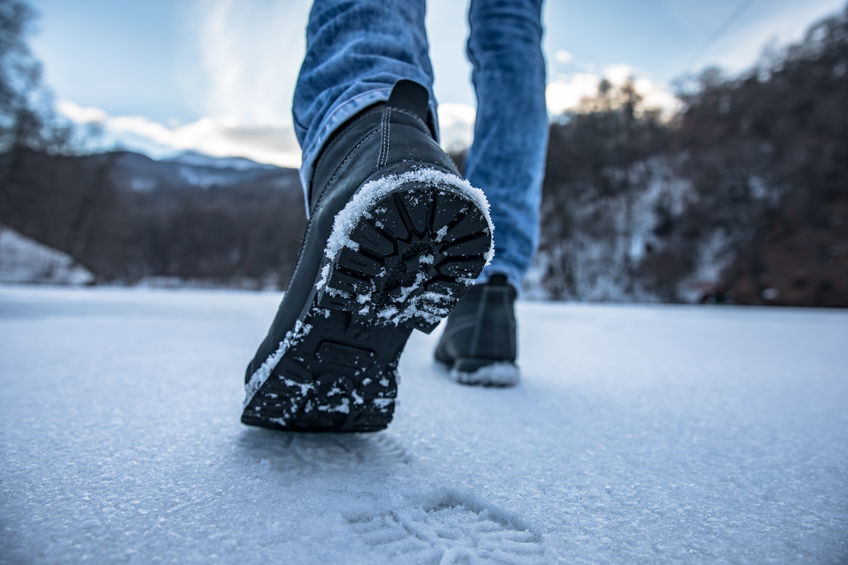
Winter can be beautiful, but it also increases the risk of slips, falls, and other injuries, especially for those with pre-existing conditions or mobility concerns. Below, you’ll find a simple guide to preventing cold-weather issues and enjoying the season safely, no matter what kind of challenges you might be facing!
Footwear: Your First Line of Defense
Proper footwear is crucial for navigating icy sidewalks and snowy pathways.
- Choose boots or shoes with deep treads and a good grip to prevent slipping on icy surfaces.
- Select footwear with warm linings and waterproof materials to keep your feet dry and insulated.
- Ensure your shoes fit snugly, but allow enough room for your toes to wiggle. Avoid shoes that are too tight; they can restrict blood flow, increasing your risk of cold-weather injuries.
Assistive Devices for Stability and Support
If you have balance issues or mobility limitations, consider using assistive devices for added support.
- AFOs, or Ankle Foot Orthoses, are devices that improve one’s biomechanics and stabilize the joints of the lower limbs. They can correct issues with your gait and physical function while boosting your overall balance.
- Canes and Walkers provide stability and help distribute your weight evenly, reducing the risk of falls.
- Ice Grips: These attachments can be added to your shoes or boots to provide extra traction on icy surfaces.
Exercises for Balance and Strength
Maintaining strength and balance is essential for preventing falls, especially during icy, slushy winter months.
Balance Exercises:
- Practice standing on one leg! Recent studies have shown that doing so is an excellent measure of both aging and balance.
-
- Stand with your feet hip-width apart and lift one leg off the ground, bending your knee at a 90-degree angle.
- Hold for 30 seconds, then switch legs.
- Repeat 3-5 times on each leg.
- To make it harder, try closing your eyes or standing on a slightly unstable surface like a pillow.
- Additionally, consider “heel-toe walking:
-
- Walk in a straight line, placing one foot directly in front of the other, heel to toe.
- Take 20 steps forward, then turn around and take 20 steps back.
- Repeat 2-3 times.
Strength Training:
- Strong leg muscles help support your joints and improve balance. Incorporate exercises like calf raises, which are fairly straightforward:
-
- Stand with your feet shoulder-width apart, holding onto a stable surface for balance if needed.
- Slowly raise up onto your toes, lifting your heels off the ground.
- Hold for a few seconds, then slowly lower your heels back down.
- Repeat 10-15 times.
At Chicago Arthritis and Regenerative Medicine, we offer the most advanced non-surgical musculoskeletal treatments. Our advanced regenerative medicine procedures and pain relief technologies treat a wide range of conditions, including sports injuries, arthritis, tendonitis, overuse injuries, and back pain. Contact our Chicago office today by calling 773-348-7171 to find out how our advanced non-surgical treatments can help relieve your pain.